Just a day after an enormous leak spilled the beans on most of the key details of the Samsung Galaxy Tab S8 range, there’s now another leak, one which reiterates some points and fills in some gaps.
This comes from LetsGoDigital , and one of the new things that the site claims is that the Samsung Galaxy Tab S8 won’t come with a charger in the box. We’ll get into whether that’s likely and why that could be a bad thing further down, but first, there’s a bunch of other stuff the site has also claimed.
It says that the Samsung Galaxy Tab S8 has an 11-inch LCD screen with a resolution of 1600 x 2560 and a 120Hz refresh rate, a Snapdragon 8 Gen 1 chipset, 5G, Android 12 , 8GB of RAM, a choice of 128GB or 256GB of storage, a microSD card slot, and Samsung’s One UI 4.1 skin.
The slate will apparently get three years of Android updates and four years of security patches, lacks a notch, and has a 12MP selfie camera, along with a 13MP main rear snapper and a 6MP ultra-wide one. There are also apparently four speakers tuned by AKG.
The Galaxy Tab S8 also apparently has an 8,000mAh battery, 45W fast charging, dimensions of 253.8 x 165.4 x 6.3mm, and a weight of 507g.
It’s also said to come with an S Pen stylus in the box, but that might be different to the one that comes with the Samsung Galaxy Tab S8 Ultra. While the latter slate might have a new stylus, the standard Tab S8 could reportedly get the same one as the Samsung Galaxy Tab S7 Plus , and therefore have a slightly higher latency.
Finally, the site claims that the Samsung Galaxy Tab S8 will be unveiled on February 8 alongside the Samsung Galaxy S22 range, and that it will be available in grey, silver, and pink gold shades, with a starting price of €700 (around $800 / £585 / AU$1,105).
That’s for a Wi-Fi-only model with 8GB of RAM and 128GB of storage. For 256GB of storage the price apparently rises to €750 (roughly $855 / £625 / AU$1,185), while for 5G you’ll supposedly be paying either €850 (approximately $970 / £710 / AU$1,345) if you want 128GB of storage, or €900 (around $1,025 / £750 / AU$1,420) for 256GB.
The site also mentions pricing for the other models, saying that the Samsung Galaxy Tab S8 Plus will likely start at €900 (roughly $1,025 / £750 / AU$1,420), while the Samsung Galaxy Tab S8 Ultra might start at €1,050 (around $1,200 / £875 / AU$1,660).
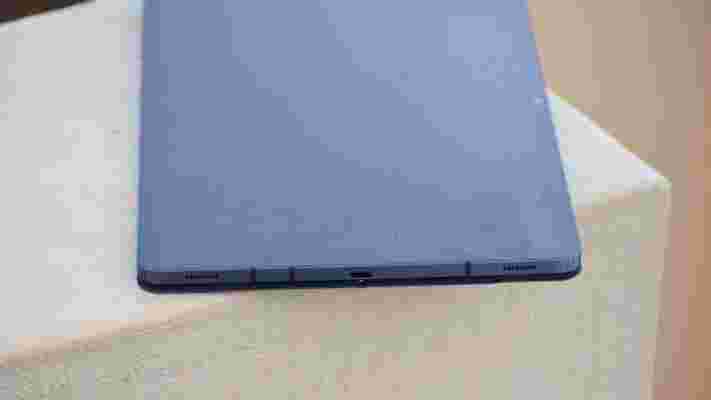
Analysis: no charger is no surprise
While this is the first we’ve heard that the Samsung Galaxy Tab S8 won’t come with a charger in the box, it isn’t a surprise, as many Samsung products now don’t include one.
The argument is probably one you’ve heard before at this point – most people already have chargers lying around, so there’s no need to include one, and not doing is both better for the environment and reduces costs, with savings that can be passed on to the consumer.
This is all true, and arguably a good justification for not including a charger, but in the case of the Samsung Galaxy Tab S8 there are two reasons why it perhaps should.
Firstly, while most people probably already have a compatible charger, they might not have a 45W one, as that’s higher power than some chargers offer. So many buyers might still have to purchase a charger to get the most out of this slate.
Secondly, while savings could be passed on to consumers, the leaked prices above suggest they might not have been in this case, as the starting price in euros is the same as the starting price of the Samsung Galaxy Tab S7 (which could also mean the same starting price in other regions, of $649.99 / £619 / AU$1,149). But that slate did come with a charger in the box.
So while we’re generally on board with ditching chargers from boxes, in this case Samsung arguably should be including one – or selling the slate for a lower price than is rumored above.
OnePlus 10 Pro colors: all the confirmed and rumored shades so far
The OnePlus 10 Pro hasn’t been announced yet – except it basically has, with OnePlus doing its usual thing of revealing a lot of details ahead of the full launch on January 11, and those details include some of the colors that you’ll be able to get this flagship phone in.
Below then, we’ve detailed the OnePlus 10 Pro shades that have been confirmed so far, then further down you’ll find other colors that have either been rumored or seem like likely candidates.
Then at the bottom there’s a brief section on the standard OnePlus 10’s colors – but nothing has been confirmed there yet. In fact, this phone is still surprisingly shrouded in mystery. As soon as we hear of any additional colors for either handset we’ll update this article too, so check back soon.
OnePlus 10 Pro in Volcanic Black
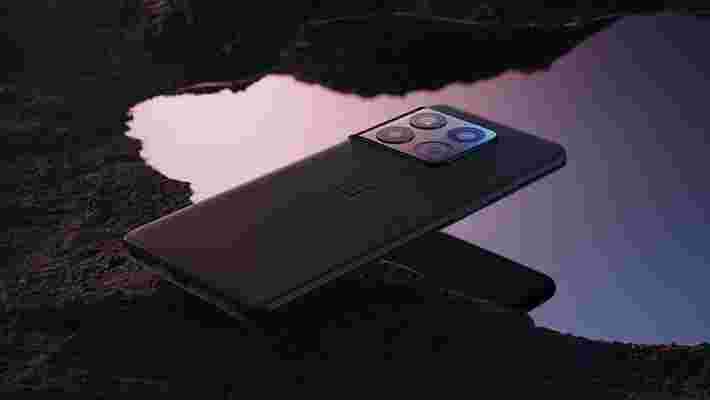
Volcanic Black is one of the confirmed colors for the OnePlus 10 Pro, and you can see this in the image above. This is one of the most common colors for any phone, so it’s no surprise that it’s included here.
It’s a matte black that’s smart, dark, and just a little bit boring, but the shiny black of the camera housing provides a bit of visual interest and contrast.
OnePlus 10 Pro in Emerald Forest
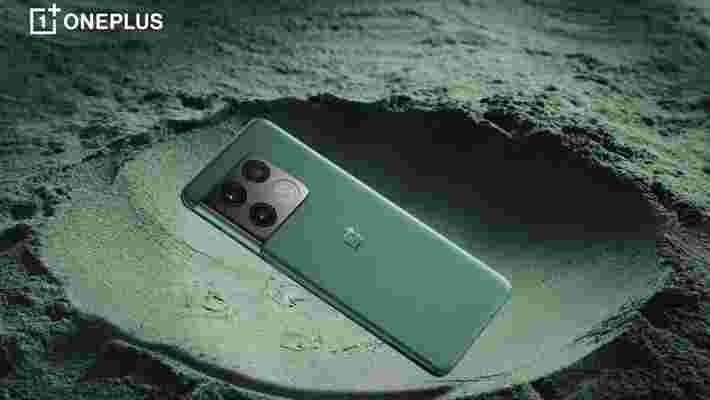
The OnePlus 10 Pro has also been confirmed to be coming in the green shade you can see above, dubbed Emerald Forest. This is slightly more unusual than black, and therefore might not sell as well, but it’s a lot more interesting.
It’s a matte shade of green, but with a shiny green frame, while the camera block is black. So there’s slightly more going on here than on the black shade.
OnePlus 10 Pro in white
One color that we’ve heard rumored for the OnePlus 10 Pro is a white shade, however this was only mentioned by one source, and there aren’t any images of it in white, so we’d take this with a pinch of salt.
That said, the source accurately leaked and rendered the black and green shades, so there might be something in it.
OnePlus 10 Pro in light blue
The same source also claimed that the OnePlus 10 Pro would come in a light blue shade, but once again there’s no imagery of it in this color, and no other sources have backed them up.
We hope this is true though as that sounds like it could make for an interesting color choice.
OnePlus 10 Pro in silver
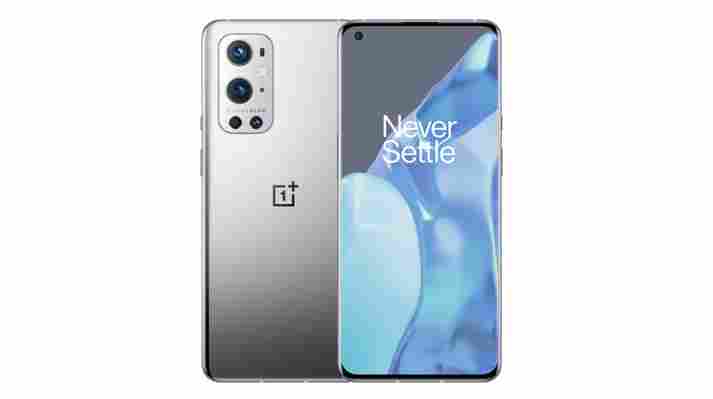
We haven’t heard anything about the OnePlus 10 Pro coming in silver, but the OnePlus 9 Pro did (or Morning Mist to use the marketing name), and it also came in black and green – with those latter two shades having been confirmed for the OnePlus 10 Pro.
So if we’re getting two out of three for the OnePlus 10 Pro then why not the third? It’s certainly possible.
OnePlus 10 colors
So far we haven’t heard anything about what colors the standard OnePlus 10 will come in. In fact, we haven’t even seen what the phone will look like – whether through leaks or official imagery.
So there’s not much we can say here, but given that the two confirmed OnePlus 10 Pro colors are similar to shades you can get the OnePlus 9 Pro in, it’s possible that the OnePlus 10 will follow in the OnePlus 9 ’s footsteps color-wise too.
That would mean black, blue, and purple shades (dubbed Astral Black, Astral Sky and Winter Mist in the case of the OnePlus 9). We may not get all of these, but we wouldn’t be surprised if at least some of the OnePlus 10’s colors are similar – though they might for example be slightly lighter or darker than the OnePlus 9 equivalents.
Inside Xbox’s backward compatibility journey with Series X development chief, Jason Ronald
When Microsoft ruled out backward compatibility during the Xbox One’s launch in 2013, it just seemed like par for the course.
At the time, consumers were generally expected to start their gaming collection from scratch whenever a new console came out and hold on to the necessary hardware if they ever wanted to replay older games.
There was also a common consensus in the industry that people probably didn’t want to play last-gen titles, something which Microsoft has since categorically disproved.
In an interview with TRG, we spoke with Xbox’s director of program management Jason Ronald about the team’s backward compatibility journey, the challenges they faced along the way, and the importance of game preservation in the future.
Power your dreams

In 2015, Microsoft rocked E3 with a seismic announcement: backward compatibility was coming to Xbox One. Fans could look forward to playing Xbox 360 and original Xbox games again, and even use the original disk, play over Xbox Live , and access their old save files if they’d been uploaded to the cloud.
The raucous cheers that erupted throughout the Microsoft Theater on that day ultimately solidified one thing: people still wanted to play these older games that were cherished by the gaming community.
Jason Ronald, director of program management at Xbox, still remembers those cheers today, and how they helped invigorate the team behind Microsoft’s ambitious project.
“When we announced it – it's probably the biggest reaction I've ever seen at one of our press conferences,” Ronald says with a smile.
“It just really gave confidence to the team. Like, we're on the right path. We're listening to the fans, we're listening to the community, and they love what we're doing. And that's really been what's powered the entire backward compatibility program since then.”
But how did Microsoft overcome the seemingly impossible technical challenges that prevented backward compatibility on Xbox One in the first place? Ronald stressed that, once again, it was the community that initially inspired the team at Xbox to focus on making backward compatibility work.
“We had seen the feedback from the community that backward compatibility was one of the top requested features to try to add to the Xbox One program. But to be completely honest, we actually didn't know if it was going to be possible,” Ronald explains.
“If you look at the architecture of an Xbox 360 versus an Xbox One, they're fundamentally different architectures. And we didn't know if we were going to be able to emulate some of these games, or what kind of problems we would run into.”
Undeterred by the possibility that the team might hit a dead end, Ronald and a group of colleagues set off on tackling the monumental challenge set before them.
“We built a small team of some of our top engineers and we kind of squirreled them away,” Ronald recalls.
“We said, ‘Hey, give us a year. Let us see if we can actually make this work.’ And I remember the first time I saw an Xbox 360 game running – it was that moment where, all of a sudden, you believed it was possible.”
As Ronald reiterates, the team at Xbox really didn’t know if backward compatibility would even work, nor could they predict the other hurdles they’d face along the way.
“We had no idea what kind of challenges we'd run into, whether they're technical or legal or licensing. So it was an entire journey. Over that year, we really had all these amazing milestones where we started instilling more and more belief in the team and our ability to go do it,” Ronald says, clearly brimming with pride.
Level up
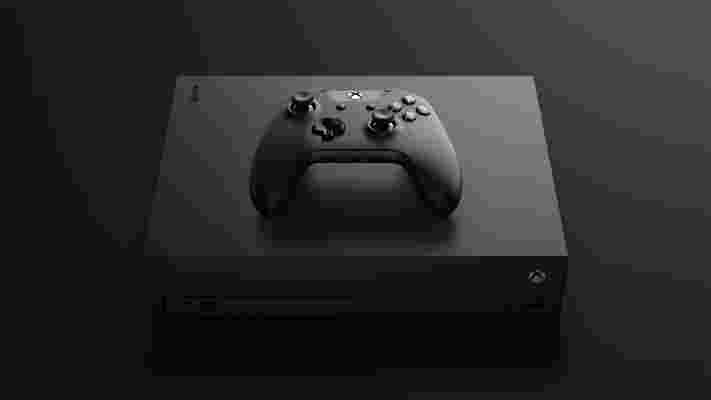
The team's belief led to a number of innovations that could modernize some backward compatible games, and it all started with Xbox One X enhancements. Using the additional graphical horsepower of the Xbox One X, Microsoft was able to bring 4K resolutions to 720p games like Red Dead Redemption and Final Fantasy XIII, along with many others.
On the newest Xbox Series X and S generation of consoles, things went even further. Microsoft introduced FPS Boost and Auto HDR , which could double and even quadruple the frame rate of older titles, as well as add high dynamic range to games that were released before HDR was even invented.
Not only did these technical improvements help transform original Xbox, Xbox 360, and Xbox One games into feeling new again – something that was typically only reserved for full-priced remakes or remasters – but these updates were completely free.
So will we see any more FPS Boost titles in the future? Ronald refused to rule it out but did explain why it isn’t as easy as flicking a switch.
“To be honest, we don't really know right now,” Ronald says candidly.
“One of the challenges that we have on some of the enhancements and the capabilities that we have is that we do all of this with no code changes to the actual original game. So, as we identify new techniques of enhancing and optimizing titles, oftentimes, we know it won't work on all games. And I think FPS Boost is a great example of that, where we're kind of tricking the game into running at a much higher frame rate.
“And some games it just works really well. But there have been other games that 99% of the game looks and plays amazing. But then we actually discover a game-breaking bug 80% of the way through or 90% of the way through,” says Ronald. “And a lot of times, we try to come up with solutions, and we see if we can work through those issues. But since we treat it as a black box, we don't have the ability to change the game code directly.
“It's one of those challenges. But we’re also kind of pushing these games further than they've ever been pushed before. And unfortunately, some of the techniques just don't work across all games.”
Digging up the past
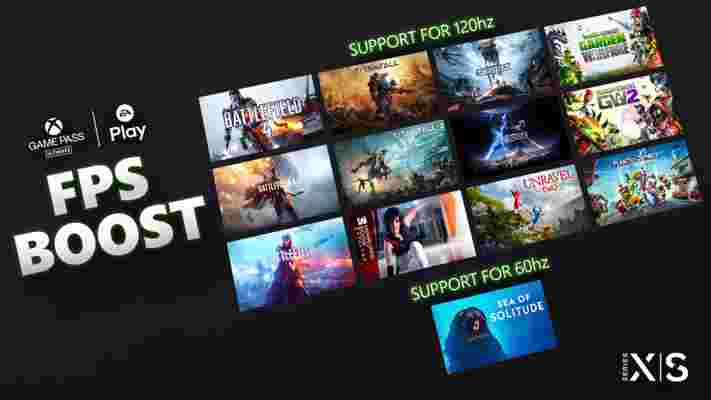
As is human nature, the success of the backward compatibility program has ultimately led to one familiar question arising: why isn’t every game backward compatible on Xbox Series X and S? Much like FPS Boost, it isn’t as straightforward as you might think.
Ronald admits that part of the challenge was that Microsoft, and the video games industry as a whole, hadn’t really designed games with future generations in mind, which posed a number of unexpected problems.
“A lot of the games in the original Xbox generation or the Xbox 360 generation, at that time, the idea of forward compatibility – and thinking about how these games will live on – was not part of the DNA of the industry,” says Ronald.
“There would be titles that we would be working on, and we would get them technically working. But then all of a sudden, we’d realize all the different approvals that we would need: whether it's a publisher or developer or a license holder.
“And that actually created a lot of work and a lot of challenges,” Ronald goes on to explain. “In some cases, when you think about the consolidation of companies, or IP being purchased, sometimes it's even difficult to figure out who you need approval from!
“But I will say every game is a unique challenge. And that’s one of the harder things to get across to the community. Because people are like, ‘Oh, well, you did this game, you should do that game’. Every game is a unique set of challenges and that's where a lot of the work goes behind actually bringing a game forward.”
Barriers to entry
Issues with licenses, publishers, and technical quirks would mean Ronald’s team could often start with a list of hundreds of games they wanted to add to the Xbox backward compatibility program, but with the understanding that they had no idea how many would make the cut or how long it might take. Some titles, as Ronald shares, have taken years to be added to the program due to the aforementioned issues.
“When we started this last patch [ over 70 back-compat titles were added on November 20, 2021 ], we actually started with a list of hundreds of games that we were going to go try,” says Ronald. “And we didn't know if we were going to get five [titles], if we were going to get 10 [titles], or if we're going to get 20 [titles].
“And to be honest, there are some games in the program that I just never thought we would be able to bring forward. It’s a labor of love and it takes, in some cases, years to be able to bring these games forward, but the team has always been really committed to doing everything we can for the fans.”
Remembering the OGs
Fundamentally, it’s Xbox fans, young and old, who have benefited most from the backward compatibility program. But has it been worth it for Microsoft as a whole? Ronald refers to his own personal experience for an answer.
“Obviously, we’re really happy with the response to the program. And we've seen a lot of new players come into franchises they've never played before,” says Ronald. “My son, he's 13. His first Fallout was actually Fallout 4 , and he's really started to love the world and the universe that they made.
“For him to be able to go back and play Fallout 3 , or to play Fallout: New Vegas. He's now getting to experience the games that I loved when I was younger, so it's just a great experience. I think it absolutely brings people back into the ecosystem. It rekindles people's memories and love for some of these franchises. And it also introduces new players to the games that we all love.”
Game preservation could shape future consoles
Game preservation has become a more prominent issue in recent years, specifically how video game manufacturers need to do more to ensure that the great games of the past can be enjoyed by generations to come.
Ronald says the team at Xbox is committed to game preservation, and that the backward compatibility program helped the team get a better grasp of how to handle it in the future.
“Game preservation is definitely in our DNA,” says Ronald proudly. “I think over the course of this program, we've learned a lot about game preservation, whether it's technical decisions, the way that games are actually ingested into the catalog, the way that we sign contracts and deal with licensing, and whatnot. I think it's actually informing not only us but the entire industry of what we can do to preserve these games moving forward.”
Interestingly, Ronald also shares that Microsoft’s commitment to backward compatibility helped shape the Xbox Series X and Xbox Series S , and will likely influence the next Xbox consoles.
“When designing the Xbox Series X and S, backward compatibility was a tenant of the program from day one and actually influenced the design of the silicon, the design of the hardware. It was like, ‘Okay, how do we make sure that these games not only work but play better than ever before.’ So absolutely, as we think about future devices, as we think about future platforms, we're always thinking about what unique things can we do to enhance or optimize these games?”
Ronald rightly points out that it’s not just about making older games look at play better, though, but also about accessibility.
“I think about something like Project X cloud [ Xbox Cloud Gaming ], and the fact that I can play a game that was written on the Xbox 360 on a phone. Trust me, when you were writing a game on the 360, nobody was thinking about a future where the game is gonna be running on the cloud. It can be streamed to my phone while I'm on the go, but my progression moves forward with me. So not only is it about optimizing enhancing games, but it's about how we can provide new ways for people to play these games.”
Jump in
The Xbox team has been on quite the journey with backward compatibility, then. There have been numerous challenges from day one, but thanks to the support of the community and some dogged determination from Microsoft’s engineers, we’re now able to enjoy and rediscover these games once again.
“A great game is a great game,” says Ronald. “It doesn't matter if it was written today, or if it was 15 years ago. We want to preserve that art form, and we want to just be able to reach more players across the world.”
We couldn’t agree more.